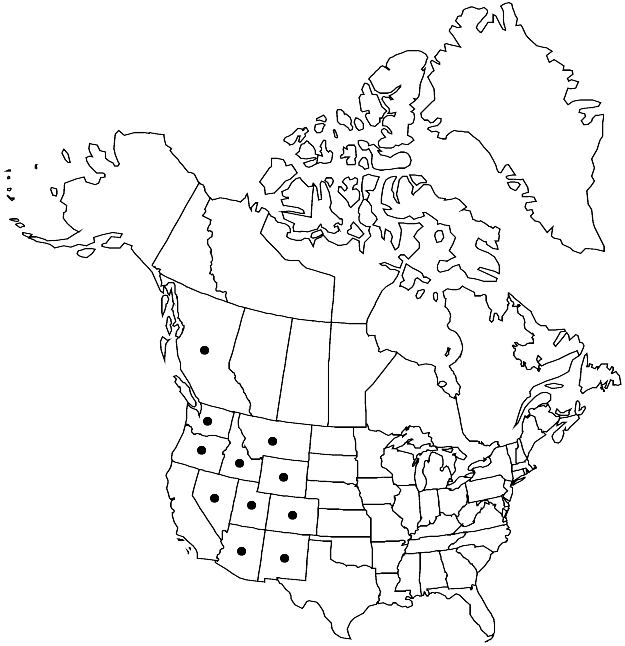Difference between revisions of "Sisymbrium linifolium"
in J. Torrey and A. Gray, Fl. N. Amer. 1: 91. 1838.
FNA>Volume Importer |
FNA>Volume Importer |
(No difference)
| |
Revision as of 22:51, 16 December 2019
Perennials; (rhizomatous); usually glabrous basally, rarely sparsely pubescent, glabrous (and sometimes glaucous) distally. Stems erect or ascending, unbranched or branched (few) distally, (1.5–)3–7(–11) dm, glabrous distally. Basal leaves (soon withered); not rosulate; petiole (proximally) (0.5–)1–3 cm; blade similar to proximal cauline, 1.5–6 cm, margins entire, pinnatifid or pinnatisect; lateral lobes oblong to linear, 0.5–2.5 cm × 0.3–1(–2) mm, margins entire. Cauline leaves sessile or shortly petiolate; blade usually filiform to linear, rarely oblanceolate, 1–2.5–9(–12) cm × 1–3.5(–5) mm (smaller distally, base attenuate or cuneate), margins usually entire, rarely dentate or pinnately lobed. Fruiting pedicels divaricate to ascending, slender, narrower than fruit, (3–)5–9(–11) mm. Flowers: sepals ascending, oblong to oblong-linear, (3–)4–7 × (0.8–)12 mm; petals spatulate, (6–)8–12 × (1.5–)2–4 mm, claw 2–5 mm; filaments (yellowish), (4–)5–7 mm; anthers linear, 1.5–2.5mm. Fruits (divaricate to erect), narrowly linear, smooth, slender, (2.5–)3.5–6.5 cm × 0.9–1.2 mm; valves glabrous; ovules 60–94 per ovary; style 0.5–1 mm; stigma prominently 2-lobed. Seeds 1–2 × 0.4–0.6 mm. 2n = 14.
Phenology: Flowering Apr–Aug.
Habitat: Rocky or gravelly hillsides, sagebrush communities, pinyon-juniper areas, shady rock cliffs, abandoned fields, sandy prairies, steep banks
Elevation: 700-2800 m
Distribution

B.C., Ariz., Colo., Idaho, Mont., Nev., N.Mex., Oreg., Utah, Wash., Wyo.
Discussion
N. H. Holmgren (2005b) recognized Sisymbrium linifolium and others (see 86. Hesperidanthus) in Schoenocrambe even though the molecular evidence (S. I. Warwick et al. 2002) overwhelmingly shows that the latter is nested within Sisymbrium, whereas the species of Hesperidanthus are not closely related. Indeed, I. A. Al-Shehbaz et al. (2006) placed Hesperidanthus and Sisymbrium in different tribes. This is an example where the superficial resemblances in fruit morphology are the result of convergence and can easily mislead to erroneous taxonomy.
Selected References
None.
